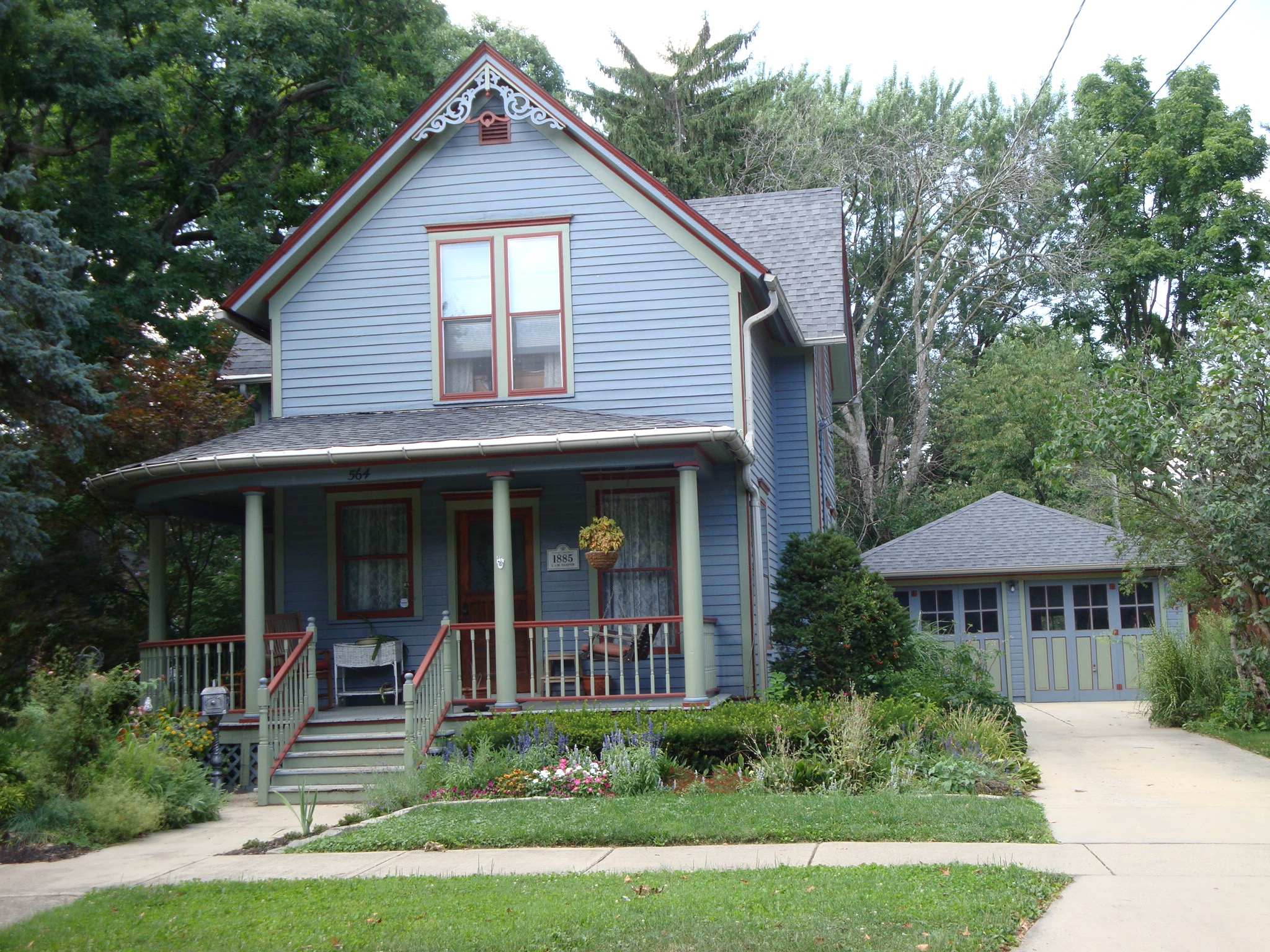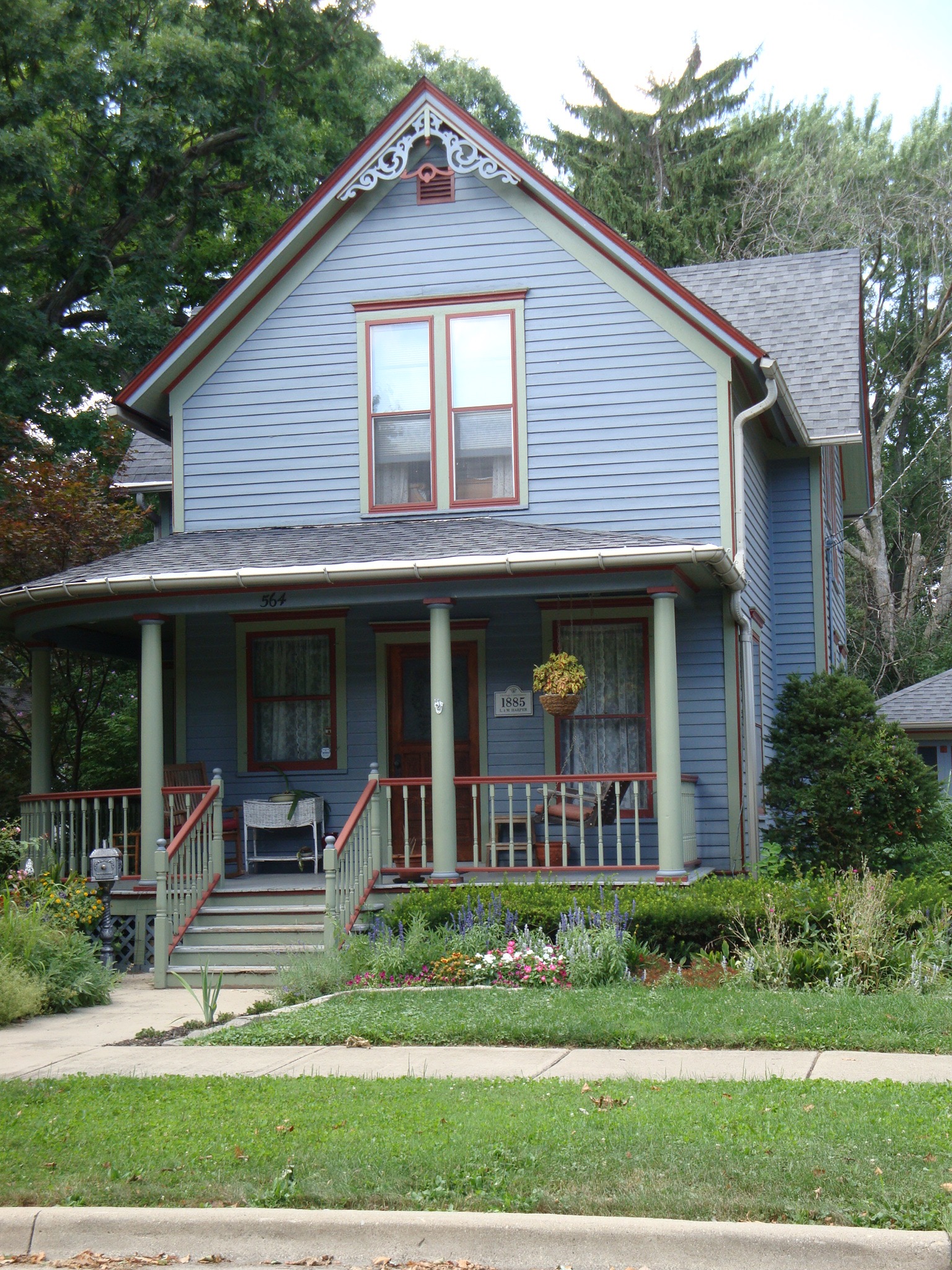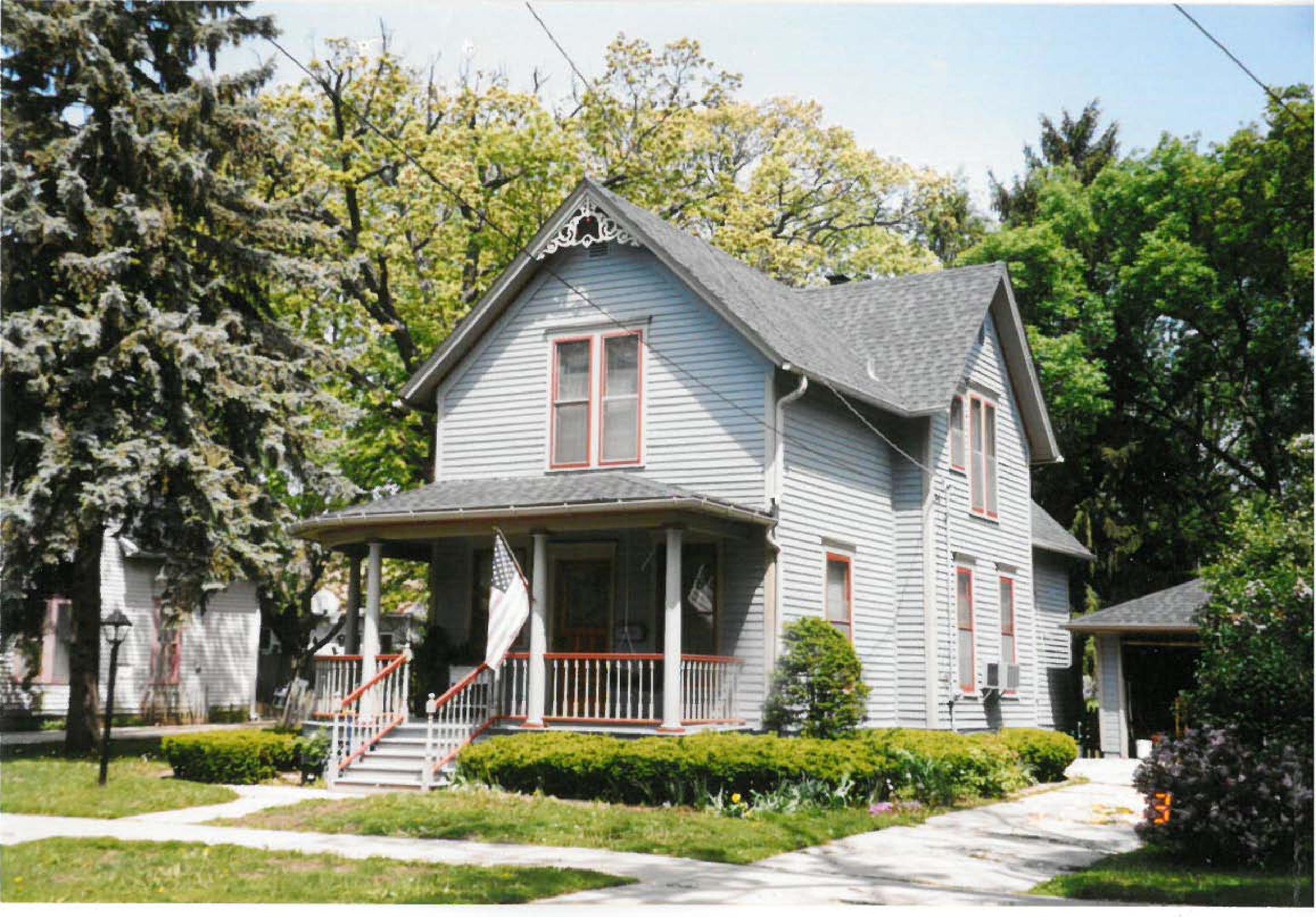564 DIVISION STREET
HISTORIC SIGNIFICANCE
In the mid-1870s, John Webb acquired part of the southeast corner along Chicago Street and Hill, going east. By 1883 he had sold a number of lots, one of which was Lot 4 to Lawrence G. Harper and his wife Mary. The Elgin City Directory for 1884-85 lists Harper at 143 N. Gifford Street; in the 1885 directory, he is at 424 Pearl Street. Elgin realigned its address numbering system in 1894 for the third and final time and 424 Pearl became 564 Division.
A worker in the Elgin Watch Factory, Lawrence and his wife Mary raised seven children in the Division Street home. In 1905, Mary filed for divorce on the ground of adultery and Lawrence moved to Freeport, Illinois where he died in 1911. For a time after their separation, the house was put under the names of the Harper's oldest son, Almore.
In 1910, the Harper's sold the home to John and Katie Schwarzwalder. John was a German immigrant and father of seven children, the second straight family to reside in the home with a seven member family. One of their son's, Clarence, died fighting in WWI. John died in 1917 and after spending two more years in the house without him, Katie moved out of 564 Division, later passing away in Indiana in 1922.
Herman and Flossie Hoppe purchased the house from the Schwarzwalders in 1919, becoming the third owners of the home. Herman was a foreman in the tool and die department of the Illinois Watch Case Company. The Hoppe's enjoyed a relatively long stay in the home, with it staying in the family's possession until 1968.
ARCHITECTURAL SIGNIFICANCE
The National Register of Historic Places nomination for the Elgin Historic District lists 564 Division Street as contributing to the historic significance of the district.
564 Division Street is an example of the Gable-Front style, a vernacular descendant of Greek Revival houses. Popular from around the 1850s until roughly the 1930s, elements of the Gable-Front style are a front facing gable and steeply pitch roof. Minimal decorative detail of varying styles was added. Here, we see some decorative elements also quite common to the style in the gable of the facade and some spindle-work on the porch.
TIMELINE OF PREVIOUS OWNERS
Sources: 2004 Heritage Plaque Application; Audio: TextAloud




